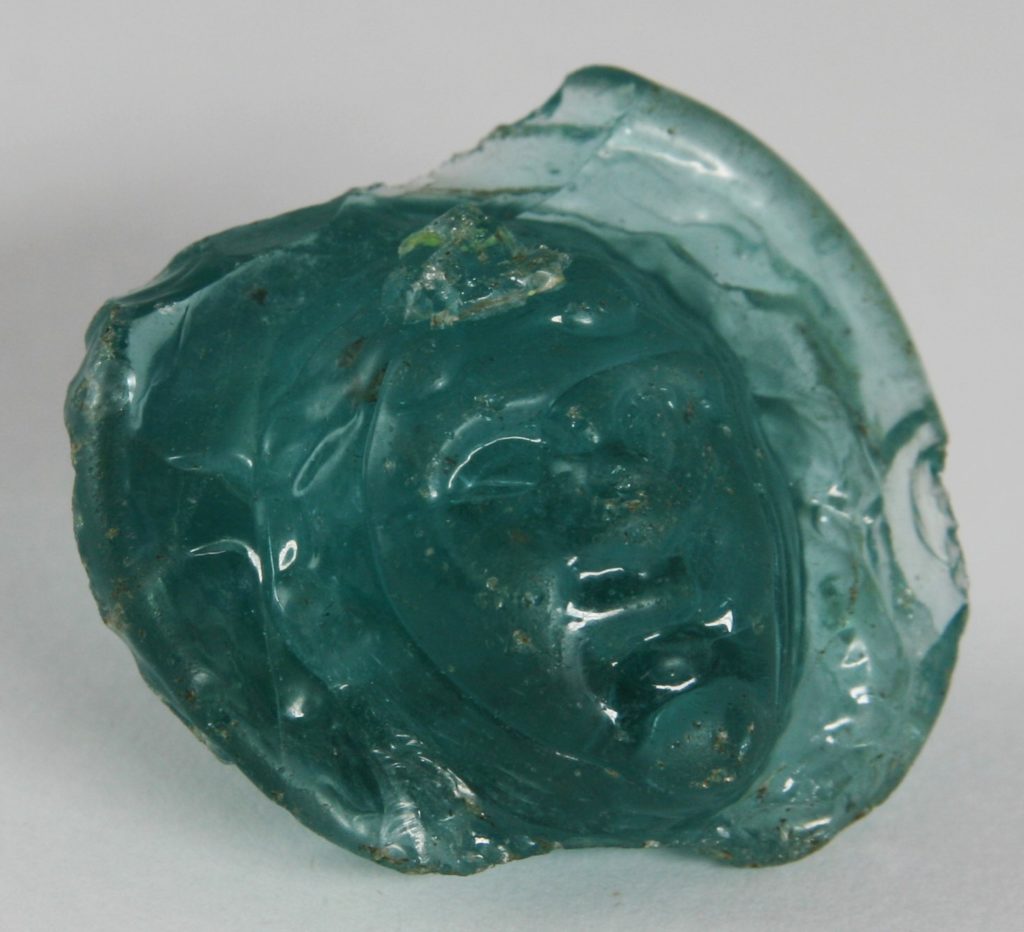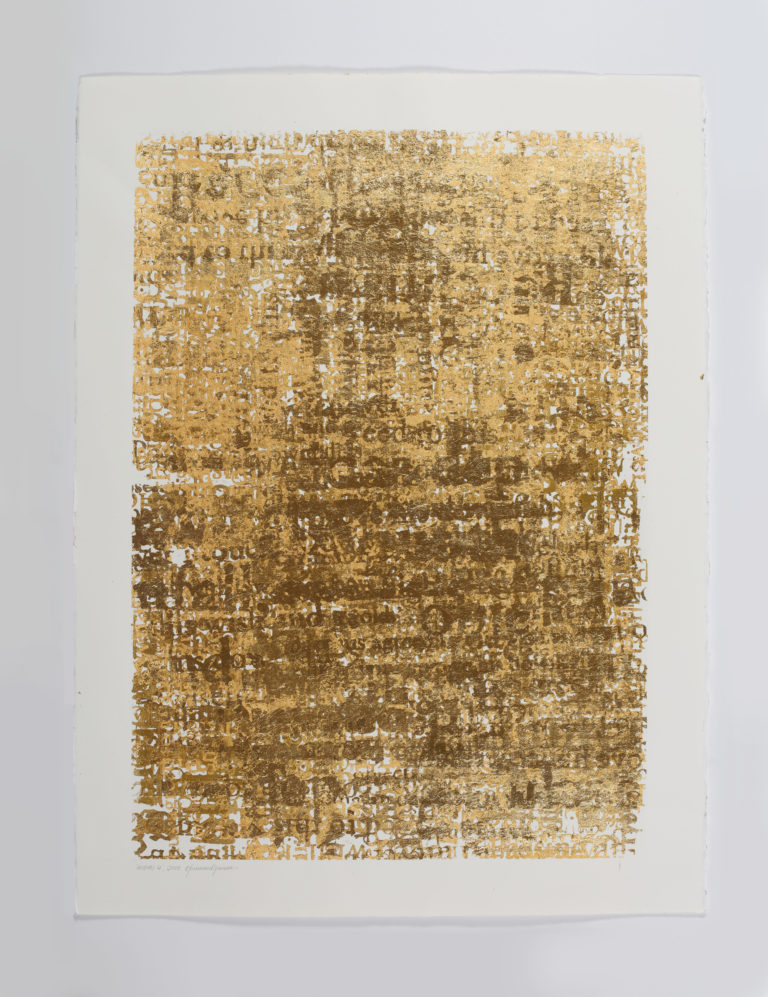
Home » Our work » Exhibitions » Alchemy exhibition » Midas
The enigmatic face on this medallion is probably Bacchus, the Roman god of wine and revelry. The medallion is thought to have hung from an expensive Roman wine glass.
The medallion was found during the excavation of a Roman settlement to the north of Poole. Find out more about the Roman glass head here.
“The Roman poet Ovid’s ‘Metamorphoses’, which recounts ancient myths, has been a recurring theme in my practice. So rather than work directly with the glass head, I chose instead to work with imagery from Ovid’s text.
In the myth, Silenus drank too much wine and became lost, so King Midas cared for him. As a reward, Bacchus gave Midas the power of turning everything he touched into gold.”
Ann-Marie enlarged sections of text from the tale of Silenus, Bacchus and Midas, from which she produced various silkscreens. She used these screens to build dense compositions on paper, rendering them as layered and ambiguous, reflecting the circumstances in which the Roman glass head was found.
Instead of using ink, Ann-Marie printed in ‘size’ – an adhesive used for gilding. Each layer of text was then gilded with imitation gold leaf.




| Cookie | Duration | Description |
|---|---|---|
| cookielawinfo-checkbox-analytics | 11 months | This cookie is set by GDPR Cookie Consent plugin. The cookie is used to store the user consent for the cookies in the category "Analytics". |
| cookielawinfo-checkbox-functional | 11 months | The cookie is set by GDPR cookie consent to record the user consent for the cookies in the category "Functional". |
| cookielawinfo-checkbox-necessary | 11 months | This cookie is set by GDPR Cookie Consent plugin. The cookies is used to store the user consent for the cookies in the category "Necessary". |
| cookielawinfo-checkbox-others | 11 months | This cookie is set by GDPR Cookie Consent plugin. The cookie is used to store the user consent for the cookies in the category "Other. |
| cookielawinfo-checkbox-performance | 11 months | This cookie is set by GDPR Cookie Consent plugin. The cookie is used to store the user consent for the cookies in the category "Performance". |
| viewed_cookie_policy | 11 months | The cookie is set by the GDPR Cookie Consent plugin and is used to store whether or not user has consented to the use of cookies. It does not store any personal data. |

Males great bustards perform spectacular courtship displays, gathering at a ‘lek’ or small display ground to try to impress the females.
The great bustard has a dignified slow walk but tends to run when disturbed, rather than fly.
The hen-bird on display at The Salisbury Museum was one of the last great bustards to be eaten in the town!